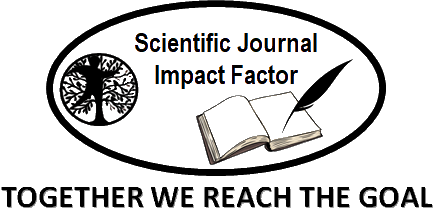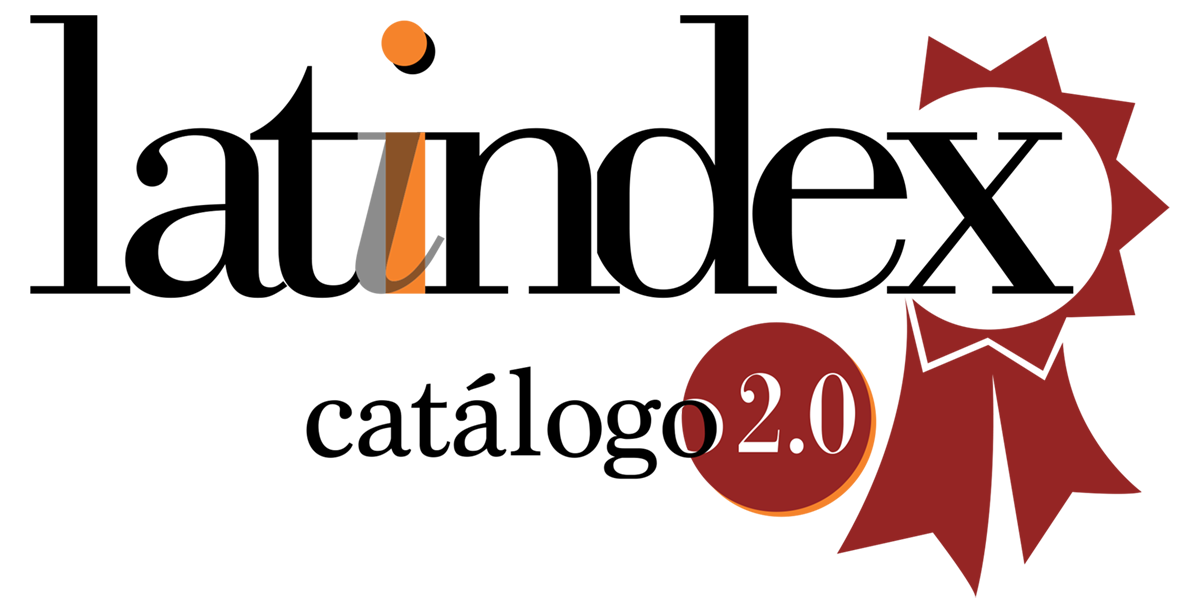Modelado y simulación de sistemas mecánicos complejos mediante principios de la física aplicada en ingeniería
DOI:
https://doi.org/10.70577/ASCE/1317.1345/2025Palabras clave:
Modelado Mecánico, Simulación Dinámica, Física Aplicada, Sistemas Complejos, Gemelos Gigitales, Redes Neuronales, Herramientas Computacionales.Resumen
El modelado y la simulación de sistemas mecánicos complejos representan un eje central en el desarrollo de soluciones innovadoras en ingeniería. Este artículo presenta una revisión sistemática y analítica del estado del arte en torno al modelado de mecanismos multicomponente, con énfasis en la integración de principios de la física aplicada y herramientas computacionales avanzadas. Se exploran los fundamentos teóricos del modelado dinámico-estructural, desde las leyes de Newton y la mecánica lagrangiana, hasta la mecánica de materiales y la teoría de vibraciones. Asimismo, se abordan técnicas modernas de simulación, como el análisis modal, la cinemática inversa y la co-simulación multidominio. La investigación identifica los principales enfoques metodológicos modelado basado en ecuaciones, modelado basado en datos e híbridos, así como las herramientas más utilizadas, como MATLAB, ANSYS, SolidWorks y Adams. Los resultados evidencian una tendencia hacia la adopción de modelos híbridos que combinan la precisión de la física con la adaptabilidad del aprendizaje automático, destacándose enfoques como PINNs, PINODE y los gemelos digitales. Se discuten los criterios de validación más efectivos y se identifican desafíos metodológicos persistentes, como la sensibilidad al ruido, la escalabilidad y la representatividad de fenómenos complejos. Finalmente, se proponen líneas de investigación futura orientadas a la mejora de la precisión, eficiencia computacional y aplicabilidad de los modelos físicos en contextos reales de ingeniería.
Descargas
Citas
Al-Furjan, M. S. H., Fereidouni, M., Habibi, M., Abd Ali, R., Ni, J., & Safarpour, M. (2022). Influence of in-plane loading on the vibrations of the fully symmetric mechanical systems via dynamic simulation and generalized differential quadrature framework. Engineering with Computers, 1-23. https://link.springer.com/article/10.1007/s00366-020-01177-7 DOI: https://doi.org/10.1007/s00366-020-01177-7
Amini, M., Sharifani, K., & Rahmani, A. (2023). Machine learning model towards evaluating data gathering methods in manufacturing and mechanical engineering. International Journal of Applied Science and Engineering Research, 15(2023), 349-362. https://papers.ssrn.com/sol3/papers.cfm?abstract_id=4331917
Bishara, D., Xie, Y., Liu, W. K., & Li, S. (2023). A state-of-the-art review on machine learning-based multiscale modeling, simulation, homogenization and design of materials. Archives of computational methods in engineering, 30(1), 191-222. https://link.springer.com/article/10.1007/s11831-022-09795-8 DOI: https://doi.org/10.1007/s11831-022-09795-8
Cardona, J. P., & Leal, J. J. (2024). Evaluación del desarrollo de habilidades de modelado matemático en un curso de ecuaciones diferenciales ordinarias: un enfoque desde la ingeniería. Formación universitaria, 17(2), 1-14. https://www.scielo.cl/scielo.php?pid=S0718-50062024000200001&script=sci_arttext DOI: https://doi.org/10.4067/s0718-50062024000200001
Choi, Y. K., Kern, N. R., Kim, S., Kanhaiya, K., Afshar, Y., Jeon, S. H., ... & Im, W. (2021). CHARMM-GUI nanomaterial modeler for modeling and simulation of nanomaterial systems. Journal of chemical theory and computation, 18(1), 479-493. https://pubs.acs.org/doi/abs/10.1021/acs.jctc.1c00996 DOI: https://doi.org/10.1021/acs.jctc.1c00996
Csaba, G., & Porod, W. (2020). Coupled oscillators for computing: A review and perspective. Applied physics reviews, 7(1). https://pubs.aip.org/aip/apr/article/7/1/011302/997386 DOI: https://doi.org/10.1063/1.5120412
Cunha, B. Z., Droz, C., Zine, A. M., Foulard, S., & Ichchou, M. (2023). A review of machine learning methods applied to structural dynamics and vibroacoustic. Mechanical Systems and Signal Processing, 200, 110535. https://www.sciencedirect.com/science/article/pii/S0888327023004430 DOI: https://doi.org/10.1016/j.ymssp.2023.110535
Erdemir, A., Mulugeta, L., Ku, J. P., Drach, A., Horner, M., Morrison, T. M., ... & Myers Jr, J. G. (2020). Credible practice of modeling and simulation in healthcare: ten rules from a multidisciplinary perspective. Journal of translational medicine, 18(1), 369. https://link.springer.com/article/10.1186/s12967-020-02540-4 DOI: https://doi.org/10.1186/s12967-020-02540-4
Fu, C., Sinou, J. J., Zhu, W., Lu, K., & Yang, Y. (2023). A state-of-the-art review on uncertainty analysis of rotor systems. Mechanical systems and signal processing, 183, 109619. https://www.sciencedirect.com/science/article/pii/S0888327022007087 DOI: https://doi.org/10.1016/j.ymssp.2022.109619
Ghadami, A., & Epureanu, B. I. (2022). Data-driven prediction in dynamical systems: recent developments. Philosophical Transactions of the Royal Society A, 380(2229), 20210213. https://royalsocietypublishing.org/doi/abs/10.1098/rsta.2021.0213 DOI: https://doi.org/10.1098/rsta.2021.0213
Gao, Y., Liu, X., Huang, H., & Xiang, J. (2021). A hybrid of FEM simulations and generative adversarial networks to classify faults in rotor-bearing systems. ISA transactions, 108, 356-366. https://www.sciencedirect.com/science/article/pii/S0019057820303359 DOI: https://doi.org/10.1016/j.isatra.2020.08.012
Georgopoulos, K., Emary, C., & Zuliani, P. (2021). Modeling and simulating the noisy behavior of near-term quantum computers. Physical Review A, 104(6), 062432. https://journals.aps.org/pra/abstract/10.1103/PhysRevA.104.062432 DOI: https://doi.org/10.1103/PhysRevA.104.062432
Guo, J., Baharvand, A., Tazeddinova, D., Habibi, M., Safarpour, H., Roco-Videla, A., & Selmi, A. (2022). An intelligent computer method for vibration responses of the spinning multi-layer symmetric nanosystem using multi-physics modeling. Engineering with Computers, 38(Suppl 5), 4217-4238. https://link.springer.com/article/10.1007/s00366-021-01433-4 DOI: https://doi.org/10.1007/s00366-021-01433-4
Guo, Y., Wang, X., Shen, Y., Dong, K., Shen, L., & Alzalab, A. A. A. (2022). Research progress, models and simulation of electrospinning technology: A review. Journal of Materials Science, 1-47. https://link.springer.com/article/10.1007/s10853-021-06575-w DOI: https://doi.org/10.1007/s10853-021-06575-w
Kohtz, S., Xu, Y., Zheng, Z., & Wang, P. (2022). Physics-informed machine learning model for battery state of health prognostics using partial charging segments. Mechanical Systems and Signal Processing, 172, 109002. https://www.sciencedirect.com/science/article/pii/S0888327022001807 DOI: https://doi.org/10.1016/j.ymssp.2022.109002
Körner, C., Markl, M., & Koepf, J. A. (2020). Modeling and simulation of microstructure evolution for additive manufacturing of metals: a critical review. Metallurgical and Materials Transactions A, 51, 4970-4983. https://link.springer.com/article/10.1007/s11661-020-05946-3 DOI: https://doi.org/10.1007/s11661-020-05946-3
Legaard, C., Schranz, T., Schweiger, G., Drgoňa, J., Falay, B., Gomes, C., ... & Larsen, P. (2023). Constructing neural network based models for simulating dynamical systems. ACM Computing Surveys, 55(11), 1-34. https://dl.acm.org/doi/abs/10.1145/3567591 DOI: https://doi.org/10.1145/3567591
Lissenden, C. J. (2021). Nonlinear ultrasonic guided waves—Principles for nondestructive evaluation. Journal of Applied Physics, 129(2). https://pubs.aip.org/aip/jap/article/129/2/021101/158329 DOI: https://doi.org/10.1063/5.0038340
Liu, R., Dobriban, E., Hou, Z., & Qian, K. (2022). Dynamic load identification for mechanical systems: A review. Archives of Computational Methods in Engineering, 29(2), 831-863. https://link.springer.com/article/10.1007/s11831-021-09594-7 DOI: https://doi.org/10.1007/s11831-021-09594-7
Liu, X., Huang, H., & Xiang, J. (2020). A personalized diagnosis method to detect faults in gears using numerical simulation and extreme learning machine. Knowledge-Based Systems, 195, 105653. https://www.sciencedirect.com/science/article/pii/S0950705120301039 DOI: https://doi.org/10.1016/j.knosys.2020.105653
Mattsson, S. E., Andersson, M., & Åström, K. J. (2020). Object-oriented modeling and simulation. In CAD for control systems (pp. 31-69). CRC Press. https://www.taylorfrancis.com/chapters/edit/10.1201/9781003067146-2/object-oriented-modeling-simulation-sven-erik-mattsson-mats-andersson-karl-johan-%C3%A5str%C3%B6m DOI: https://doi.org/10.1201/9781003067146-2
Nikolayev, V. S. (2021). Physical principles and state-of-the-art of modeling of the pulsating heat pipe: A review. Applied Thermal Engineering, 195, 117111. https://www.sciencedirect.com/science/article/pii/S1359431121005512 DOI: https://doi.org/10.1016/j.applthermaleng.2021.117111
Norrish, J., Polden, J., & Richardson, I. (2021). A review of wire arc additive manufacturing: development, principles, process physics, implementation and current status. Journal of Physics D: Applied Physics, 54(47), 473001. https://iopscience.iop.org/article/10.1088/1361-6463/ac1e4a/meta DOI: https://doi.org/10.1088/1361-6463/ac1e4a
Papazoglou, E. L., Karkalos, N. E., Karmiris-Obratański, P., & Markopoulos, A. P. (2022). On the modeling and simulation of SLM and SLS for metal and polymer powders: a review. Archives of Computational Methods in Engineering, 1-33. https://link.springer.com/article/10.1007/s11831-021-09601-x DOI: https://doi.org/10.1007/s11831-021-09601-x
Ritto, T. G., & Rochinha, F. A. (2021). Digital twin, physics-based model, and machine learning applied to damage detection in structures. Mechanical Systems and Signal Processing, 155, 107614. https://www.sciencedirect.com/science/article/pii/S0888327021000091 DOI: https://doi.org/10.1016/j.ymssp.2021.107614
Roehrl, M. A., Runkler, T. A., Brandtstetter, V., Tokic, M., & Obermayer, S. (2020). Modeling system dynamics with physics-informed neural networks based on Lagrangian mechanics. IFAC-PapersOnLine, 53(2), 9195-9200. https://www.sciencedirect.com/science/article/pii/S2405896320328354 DOI: https://doi.org/10.1016/j.ifacol.2020.12.2182
Rui, X., Zhang, J., Wang, X., Rong, B., He, B., & Jin, Z. (2022). Multibody system transfer matrix method: the past, the present, and the future. International Journal of Mechanical System Dynamics, 2(1), 3-26. https://onlinelibrary.wiley.com/doi/abs/10.1002/msd2.12037 DOI: https://doi.org/10.1002/msd2.12037
Stern, M., Arinze, C., Perez, L., Palmer, S. E., & Murugan, A. (2020). Supervised learning through physical changes in a mechanical system. Proceedings of the National Academy of Sciences, 117(26), 14843-14850. https://www.pnas.org/doi/abs/10.1073/pnas.2000807117 DOI: https://doi.org/10.1073/pnas.2000807117
Vadyala, S. R., Betgeri, S. N., Matthews, J. C., & Matthews, E. (2022). A review of physics-based machine learning in civil engineering. Results in Engineering, 13, 100316. https://www.sciencedirect.com/science/article/pii/S2590123021001171 DOI: https://doi.org/10.1016/j.rineng.2021.100316
Vasudevan, R., Pilania, G., & Balachandran, P. V. (2021). Machine learning for materials design and discovery. Journal of Applied Physics, 129(7). https://pubs.aip.org/aip/jap/article/129/7/070401/287201 DOI: https://doi.org/10.1063/5.0043300
Wagg, D. J., Worden, K., Barthorpe, R. J., & Gardner, P. (2020). Digital twins: state-of-the-art and future directions for modeling and simulation in engineering dynamics applications. ASCE-ASME Journal of Risk and Uncertainty in Engineering Systems, Part B: Mechanical Engineering, 6(3), 030901. https://asmedigitalcollection.asme.org/risk/article-abstract/6/3/030901/1081999 DOI: https://doi.org/10.1115/1.4046739
Wang, J., Li, Y., Gao, R. X., & Zhang, F. (2022). Hybrid physics-based and data-driven models for smart manufacturing: Modelling, simulation, and explainability. Journal of Manufacturing Systems, 63, 381-391. https://www.sciencedirect.com/science/article/pii/S0278612522000541 DOI: https://doi.org/10.1016/j.jmsy.2022.04.004
Willard, J., Jia, X., Xu, S., Steinbach, M., & Kumar, V. (2022). Integrating scientific knowledge with machine learning for engineering and environmental systems. ACM Computing Surveys, 55(4), 1-37. https://dl.acm.org/doi/abs/10.1145/3514228 DOI: https://doi.org/10.1145/3514228
Yan, B., Harp, D. R., Chen, B., Hoteit, H., & Pawar, R. J. (2022). A gradient-based deep neural network model for simulating multiphase flow in porous media. Journal of Computational Physics, 463, 111277. https://www.sciencedirect.com/science/article/pii/S0021999122003394 DOI: https://doi.org/10.1016/j.jcp.2022.111277
Zhang, L., Zhou, L., & Horn, B. K. (2021). Building a right digital twin with model engineering. Journal of Manufacturing Systems, 59, 151-164. https://www.sciencedirect.com/science/article/pii/S0278612521000455 DOI: https://doi.org/10.1016/j.jmsy.2021.02.009
Zohdi, T. I. (2020). A machine-learning framework for rapid adaptive digital-twin based fire-propagation simulation in complex environments. Computer Methods in Applied Mechanics and Engineering, 363, 112907. https://www.sciencedirect.com/science/article/pii/S0045782520300906 DOI: https://doi.org/10.1016/j.cma.2020.112907
Descargas
Publicado
Cómo citar
Número
Sección
Licencia
Derechos de autor 2025 Julio César Morocho Orellana

Esta obra está bajo una licencia internacional Creative Commons Atribución-NoComercial-SinDerivadas 4.0.
Eres libre de:
- Compartir : copiar y redistribuir el material en cualquier medio o formato
- Adaptar : remezclar, transformar y desarrollar el material
- El licenciante no puede revocar estas libertades siempre y cuando usted cumpla con los términos de la licencia.
En los siguientes términos:
- Atribución : Debe otorgar el crédito correspondiente , proporcionar un enlace a la licencia e indicar si se realizaron cambios . Puede hacerlo de cualquier manera razonable, pero no de ninguna manera que sugiera que el licenciante lo respalda a usted o a su uso.
- No comercial : no puede utilizar el material con fines comerciales .
- CompartirIgual — Si remezcla, transforma o construye sobre el material, debe distribuir sus contribuciones bajo la misma licencia que el original.
- Sin restricciones adicionales : no puede aplicar términos legales ni medidas tecnológicas que restrinjan legalmente a otros hacer algo que la licencia permite.





































